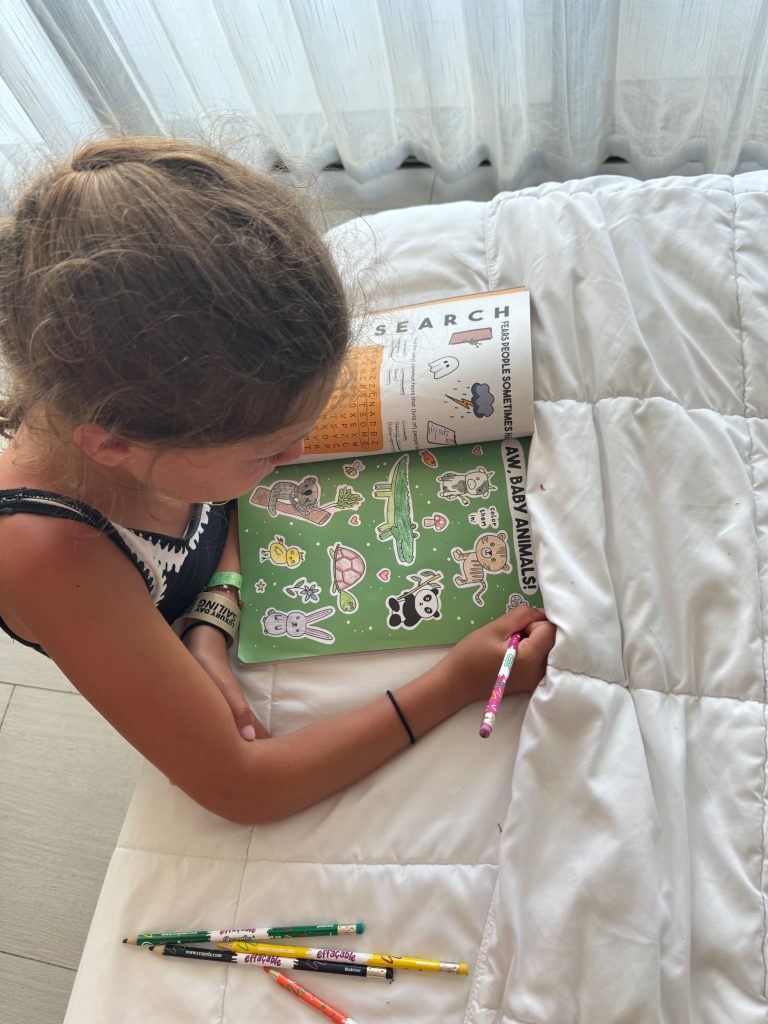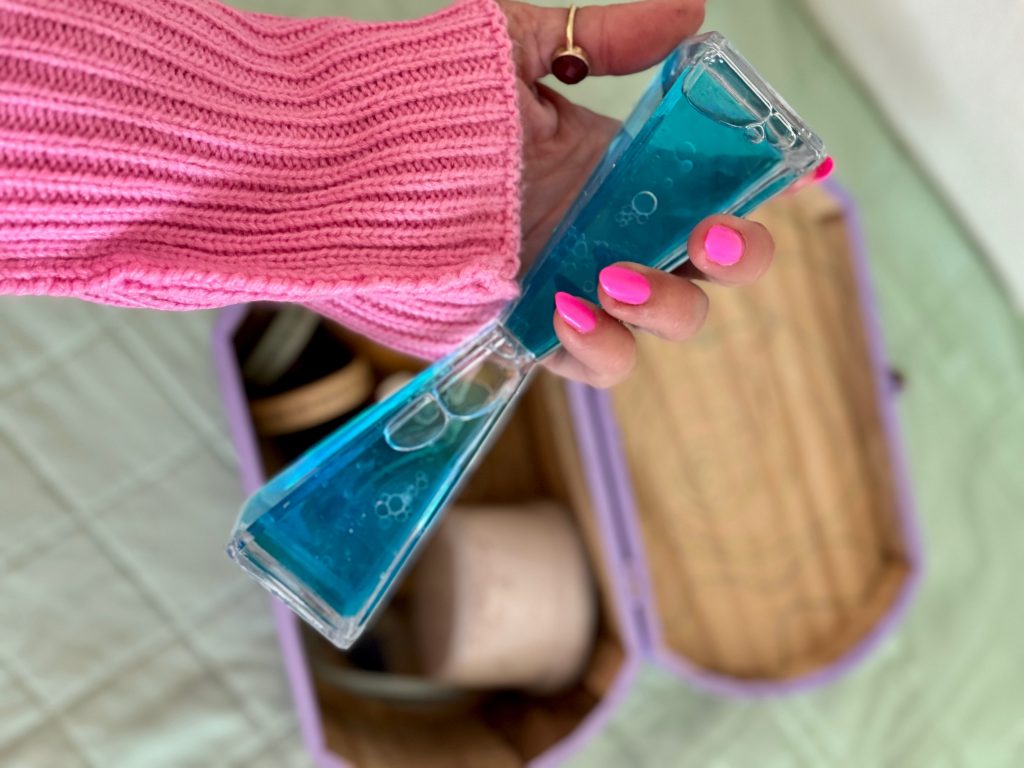
My child’s tantrums have set the stage for some of my favorite moments in life. Stay with me, here.
The girl has always had a set of lungs on her. And from the time she was old enough to understand the words “go to your room,” she understood the truly awesome power of simply not doing a thing that a person is telling you to do. So I’d pick her up and plop her in her room, except there was no lock on her door, so then I’d spend the next however long literally leaning my full body weight against the door to hold in the wildebeest trying to break through from the other side.
I posted a video of this to Instagram and of course got lots of “you’re torturing your daughter/you’re the worst mom in the world” comments. I would beg to differ as to the person inflicting the torture in this case, but sure. But also, it is my firm belief that when parenting gets especially chaotic and overwhelming, laughing is the absolute best thing you can do – and not a terrible lesson for your kids, either.
This was just sorta her way – once she got going, she was going to go there, like it or not. I called it “full plank mode” – we’re talking spread-eagled on the floor, limbs absolutely not budging on pain of death, and oh my god so much sound – and she did it in shoe stores, in Renaissance Faires, in Nobu. It was embarrassing, until it wasn’t, because I realized that it didn’t have to be.
There was one incident that particularly stands out: We were on a trip to New York. It was springtime, and I took my adorable baby to meet my friend at an outdoor restaurant in Bryant Park. Cherry blossoms, glasses of rose, a happily napping baby; it was lovely. Except about an hour and a half in it became clear that the baby was done, even if we were not. Totally fine, time to go…but it turned out that we had missed our window by about ten minutes. Because by the time the bill came and I began trying to get her into her stroller…well…
Full plank mode. Which is a hard mode to wrestle into shoulder straps.
Wrestle her we did, though, to the vast entertainment of everyone around us (all of whom I am certain were very happy to see that we were presently departing). I couldn’t get a taxi, so I decided to (speed) walk back to my parents’ apartment – a mile or so – while pushing a stroller holding a fed, napped, and cozily bundled-up toddler who nevertheless appeared to be undergoing some rarefied form of torture.
It was sort of like parting the seas: People would see (and hear) us coming, look down at the stroller in horror, and then look up at me to see what kind of monster must be responsible for such misery. And yes, I was beet-red and crying — but it was from how hard I was laughing. I mean it: I cackled the entire way home, and each and every person I passed on the street saw me and instantly began cackling themselves. It felt like leaving a dusting of connection behind me, people actually seeing me not as a stranger to side-step, but a harried new mom dealing with a baby who was in a mood.
And I was laughing, so people decided they could laugh, too. I could hear them behind me all the way home.

(Truly unbiased, I swear) take: I cannot tell you how helpful this book is for helping kids cope with (and talk about) anxiety; it comes with us everywhere.
In the midst of these outbursts – which both of my children, of course, have had – I have screamed at them. I hate it when this happens – hate it. I lay awake nights replaying each and every time I’ve ever yelled at them, forcing myself to recall the expressions on their faces as a form of atonement. It’s self-flagellatory BS, and I know this – every parent breaks, every parent yells – but my specific problem is that in my case, yelling tends to work. It tends to be what finally breaks the back-and-forth – not in a good way, in an operatic one, but sometimes you just want it to stop.
I call it being “out of my window” when I talk to the kids about losing one’s temper. If I’m getting upset, I’ll point out that my voice is getting kind of funny, and that I’m starting to get flushed; these are signs, I’ve told them, that I am approaching the outer limit of my window. But because they are 10 and 13, sometimes (often) they do not care. And they keep going. And I yell.
I need another offramp, one that I can reliably count on, and it was my cousin Carrie (who has a long and impressive background in child development) who gave me this suggestion: When her children are escalating towards a full-blown meltdown, or when she feels like she’s about to lose it, she sends them to spend a few minutes in a neutral space (not their room, which can feel punitive) with their “Calm Box.”

It’s really just a box filled with sensory stuff that makes the child feel relaxed. In ours is one of those liquid bubble timers that look like lava lamps (above) – the bubbles take five minutes to flow from one side to the other, so she can track how much time she has left. We also put in a squish toy, some dried lavender, a scented lip balm, and some fidget toys. And we made the box itself a bit of a thing: She painted it and made it feel special, so going to get it feels like a treat.
More ideas for your calm box:
- The Everybody Gets Anxious Activity Book
- Thinking putty
- Magic sand
- Pop-Its
- Noise-canceling headphones
- Weighted lap pad
- Cards for calm
- Rubik’s cube
It’s great. It is working for us. And this makes sense, psychologically: Creating and then using a physical tool gives a kid a sense of control, while also providing some fantastic lessons (when you’re overwhelmed, it’s ok to step away and take a minute to center yourself; anxiety can live in the body; etc). Active mindfulness, if you will.
Children are so exhausting, and so specific, and also they’re dealing with so much as they figure out how to make their own way in this nutty world of ours. They can have full Defcon 1 meltdowns over anything from a dropped Cheerio to a missing marker. And that’s OK! They’re working it out. (A strong exception for public meltdowns that affect other people, e.g. in restaurants and movie theaters – in those cases, leave. Leave immediately.)
Motherhood can feel like floating alone in a sea of anxiety over whether you’re doing it right and just the simple act of hearing “Hey, I tried this and it worked; maybe it’ll work for you” can feel like a life raft when you’re drowning. Besides, another wonderful piece of wisdom I’ve acquired from fellow moms over the years is this: It turns out that if you’re thinking about this stuff – how to help your children manage their emotions, how to better manage your own – you’re already doing it right. Isn’t that a relief?!






